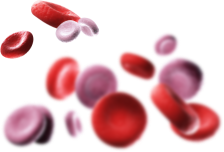Care has evolved, but challenges with disease management remain3,4
Over time, advances in thalassemia care have enabled improved survival for patients with TDT.1,2 However, patients and caregivers are still significantly impacted by the disease management and its associated complications.1,2 Ongoing management of TDT and its complications can affect1,2:
- Emotional conditions
- Daily activities
- Family experiences
- Occupational capabilities
Lifelong transfusions and unavoidable iron overload are associated with serious complications5
Comorbidities3
Patient perspectives
Having frequent, ongoing conversations early on in your relationship with patients and caregivers can enable you to forecast key points in the patient’s life that may lead to deeper discussions about their needs. Some of the life events that your patients may be considering include:
- Starting elementary or high school
- Attending/going away to college or other higher education
- Playing sports
- Starting a new job
- Getting married
- Planning a family

Help your patients plan for their tomorrow
A guide to help patients discuss their goals and work with a care team to create a treatment plan“I understand that managing symptoms and treatments for TDT can impact your life—school, work, home, and other areas of your routine and personal goals. Can you share some examples of these challenges?”
of all ages who have TDT It’s time to rethink conversations with patients of all ages who have TDT
Take a closer look at quality of life (QoL) impact Take a closer look at quality of life (QoL) impact
Long disease-management times
Long disease-
management times
In a 2019 real-world study with 85 participants, patients and caregivers reported spending ~11 hours a week managing TDT7
Lower HRQoL scores
Lower HRQoL scores
In a study of 264 patients, thalassemia patients reported having a lower health-related QoL than the general population1




